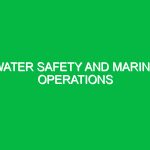In today’s interconnected world, businesses often find strength in collaboration, leading to the formation of joint ventures and partnerships. However, while these collaborations can offer significant benefits, they also introduce complex challenges, particularly in the realm of health, safety, and environment (HSE) management. Managing safety in joint ventures and partnerships is not just a bureaucratic necessity; it is a vital component that can determine the success or failure of the collaboration. This article delves into the intricacies of managing safety within these partnerships, highlighting potential hazards, best practices, and regulatory considerations.
Understanding Managing Safety in Joint Ventures and Partnerships
At its core, managing safety in joint ventures and partnerships involves the systematic identification, assessment, and mitigation of risks that arise when two or more entities collaborate on a project. This process is crucial because each partner may bring different safety cultures, operational practices, and risk management approaches to the table. The integration of these diverse elements can create potential safety gaps that need to be addressed collectively.
Consider a scenario where a construction company partners with a technology firm to develop a new smart building. The construction firm may have robust safety protocols on-site, while the tech firm may prioritize rapid innovation over traditional safety measures. Without a unified safety management strategy, the collaboration could lead to accidents, legal repercussions, and reputational damage.
Identifying Hazards and Risks in Joint Ventures
When managing safety in joint ventures and partnerships, it is essential to identify and understand various hazards and risks associated with the collaboration. These can be broadly categorized into several types:
1. Operational Hazards
Operational hazards arise from the day-to-day activities of the joint venture. These can include equipment failures, unsafe work practices, and environmental hazards. For instance, in a joint venture focused on oil extraction, there could be risks related to equipment malfunction, spills, and chemical exposure. Such operational hazards require constant monitoring and proactive management to prevent incidents.
2. Cultural Differences
Every organization has its own safety culture, shaped by its history, workforce, and operational focus. When partners come together, these cultures can clash, leading to misunderstandings and lapses in safety. For example, a company with a strong safety record might partner with another that has a history of cutting corners. This conflict can create a dangerous atmosphere if not addressed early on.
3. Regulatory Compliance Risks
Joint ventures often span multiple jurisdictions, each with its own set of regulations and compliance requirements. Navigating these can be challenging. For example, if a partnership operates in both the United States and Europe, it must adhere to OSHA standards in the U.S. while also complying with the EU’s Health and Safety Directives. Misunderstanding or ignoring these regulations can lead to significant penalties.
4. Communication Breakdowns
Effective communication is vital for safety management. In joint ventures, varying communication styles and practices can lead to critical information being overlooked. For instance, if one partner fails to communicate changes in safety protocols, it could result in accidents or harm to employees.
5. Financial Risks
Financial pressures can sometimes lead to compromised safety standards. In joint ventures where profit margins are thin, there may be a temptation to reduce safety spending. This can result in inadequate training, poor maintenance of equipment, or insufficient safety measures, ultimately jeopardizing employee safety and project success.
Best Practices for Managing Safety in Joint Ventures and Partnerships
To effectively manage safety in joint ventures and partnerships, organizations should adopt a proactive and collaborative approach. Here are some best practices to consider:
1. Establish a Unified Safety Management System
Creating a unified safety management system can help align the safety practices of all partners involved. This system should outline clear safety protocols, roles, responsibilities, and reporting mechanisms. Regular safety meetings can facilitate communication and ensure that everyone is on the same page.
2. Conduct Comprehensive Risk Assessments
Before commencing work, partners should conduct thorough risk assessments to identify potential hazards and assess their impact. This process should be inclusive, involving all stakeholders to gather diverse perspectives. By understanding the unique risks associated with the collaboration, partners can develop targeted safety measures.
3. Foster a Collaborative Safety Culture
A collaborative safety culture encourages open communication about safety concerns. Partners should promote a culture where employees feel empowered to speak up about safety issues without fear of retaliation. Regular training and workshops can help reinforce the importance of safety and ensure that all employees understand their roles in maintaining it.
4. Implement Regular Training Programs
Training is key to ensuring that all employees are equipped to handle safety challenges. Joint ventures should implement regular training programs tailored to the specific risks associated with the project. This could include emergency response drills, equipment handling training, and courses on regulatory compliance.
5. Monitor and Evaluate Safety Performance
Ongoing monitoring and evaluation of safety performance are crucial. Establishing key performance indicators (KPIs) can help assess how well the joint venture is performing in terms of safety. Regular audits and inspections can help identify areas for improvement and ensure that safety measures are being followed consistently.
Regulatory Compliance in Joint Ventures
Understanding and adhering to relevant regulations is a critical aspect of managing safety in joint ventures and partnerships. Organizations must be aware of the legal frameworks governing their operations, which can vary significantly by region and industry. Key regulations to consider include:
1. Occupational Safety and Health Administration (OSHA)
In the United States, OSHA sets forth regulations that dictate workplace safety standards. Joint ventures operating in the U.S. must ensure compliance with OSHA guidelines, which cover everything from hazard communication to personal protective equipment standards. Failure to comply can lead to hefty fines and legal issues.
2. Environmental Protection Agency (EPA)
For projects that may impact the environment, adherence to EPA regulations is essential. This includes understanding waste disposal laws, emissions standards, and water quality regulations. Joint ventures must ensure that environmental safety measures are integrated into their operations to avoid violations and protect natural resources.
3. International Organization for Standardization (ISO)
ISO standards, particularly ISO 45001, provide guidelines for occupational health and safety management systems. Many organizations seek ISO certification to demonstrate their commitment to safety. Joint ventures can benefit from adopting these international standards to enhance their safety practices and improve their credibility.
4. Local and Industry-Specific Regulations
In addition to federal regulations, joint ventures must also be aware of local laws and industry-specific regulations that may apply. For instance, construction projects may have specific safety codes that need to be followed, while manufacturing operations might be subject to different safety standards. Understanding these requirements is crucial for compliance and risk management.
Conclusion
Managing safety in joint ventures and partnerships is an ongoing process that requires diligence, collaboration, and a commitment to continuous improvement. By understanding the unique hazards associated with joint ventures, implementing best practices, and adhering to regulatory requirements, organizations can create a safer work environment that not only protects employees but also enhances the overall success of the partnership. Embracing a proactive safety culture will ultimately foster trust among partners and contribute to the long-term sustainability of collaborative efforts.


